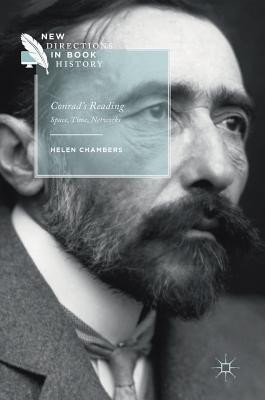
- We will send in 10–14 business days.
- Author: Helen Chambers
- Publisher: Palgrave Macmillan
- Year: 2018
- ISBN-10: 3319764861
- ISBN-13: 9783319764863
- Format: 14.8 x 21 x 1.6 cm, hardcover
- Language: English
- SAVE -10% with code: EXTRA
Reviews
Description
This book aligns concepts and methods from book history with new literary research on a globally studied writer. An innovative three-part approach, combining close reading the evidence of reading, scrutiny of international book distribution circuits, and of Conrad's many fictional representations of reading, illuminates his childhood, maritime and later shore-based reading. After an overview of the empirical evidence of Conrad's reading, his sparsely documented twenty years reading at sea and in port is reconstructed. An examination the reading practices of his famous narrator Marlow then serves to link Conrad's own maritime and shore-based reading. Conrad's subsequent networked reading, shared with his closest male friends, and with literate multilingual women, is examined within the context of Edwardian reading practices. His fictional representations of reading and material texts are highlighted throughout, including genre trends, periodical reading, reading spaces and their lighting, and the use of reading as therapy. The book should appeal both to Conrad scholars and to historians of reading.
EXTRA 10 % discount with code: EXTRA
The promotion ends in 20d.01:09:11
The discount code is valid when purchasing from 10 €. Discounts do not stack.
- Author: Helen Chambers
- Publisher: Palgrave Macmillan
- Year: 2018
- ISBN-10: 3319764861
- ISBN-13: 9783319764863
- Format: 14.8 x 21 x 1.6 cm, hardcover
- Language: English English
This book aligns concepts and methods from book history with new literary research on a globally studied writer. An innovative three-part approach, combining close reading the evidence of reading, scrutiny of international book distribution circuits, and of Conrad's many fictional representations of reading, illuminates his childhood, maritime and later shore-based reading. After an overview of the empirical evidence of Conrad's reading, his sparsely documented twenty years reading at sea and in port is reconstructed. An examination the reading practices of his famous narrator Marlow then serves to link Conrad's own maritime and shore-based reading. Conrad's subsequent networked reading, shared with his closest male friends, and with literate multilingual women, is examined within the context of Edwardian reading practices. His fictional representations of reading and material texts are highlighted throughout, including genre trends, periodical reading, reading spaces and their lighting, and the use of reading as therapy. The book should appeal both to Conrad scholars and to historians of reading.


Reviews